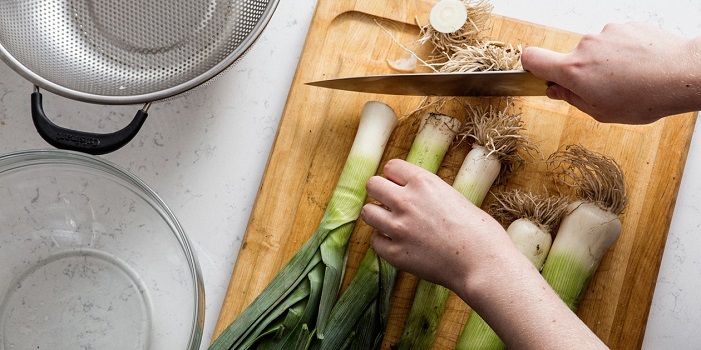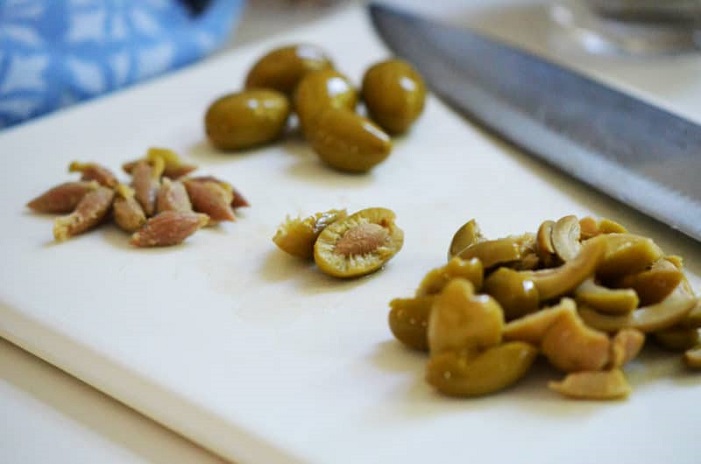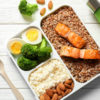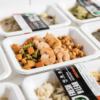SUMMARY
Eating fresh, delicious food usually means spending a bit of time in the kitchen. While cooking can be really enjoyable, there are some tasks everybody would rather avoid. Here are seven of them, and how to make them easier so you can focus on crafting your dishes.
Fresh N’ Lean is the nation’s largest organic meal delivery service. Our tasty, chef-prepared cuisine is always fresh and never frozen, and we offer five convenient meal plans: Protein+, Keto, Paleo, Standard Vegan and Low-Carb Vegan. Choose Fresh N’ Lean for affordable nutrition, delivered to your doorstep.
Cooking can be great if you have the time to devote to producing healthy, nutritious and fresh meals every day.
But when time is short, cooking can start to seem like one big chore.
While you’ll always need to spend a little bit of time over the stove if you want to cook something from scratch, there are some cooking chores that everybody would rather not have to do. These are the tasks that turn a quick, convenient cooking experience into something tiresome and irritating, but there are ways you can make it easier for yourself.
Related: 25 Genius Meal Prep Hacks
1 – Peeling Vegetables
Eating plenty of vegetables is one of the most important and simplest ways to improve your diet and eat clean. But the delicious bits of the veggies are hidden behind often thicker, harder-to-eat or just unpleasant skins. To get to the part of your carrot or potato that you actually want to eat, you have to take your peeler out and spend a lot of time carefully going over every inch of skin on the vegetable. You’ll achieve the result you want, but not before you spend your precious time hunting out the skin on your veggies and getting flakes of peel all over your countertop and probably the floor.
How to Peel Your Vegetables Quickly and Efficiently
But if you’re smart about peeling your vegetables, you can make the process a lot simpler. A good example is a squash. Most people use the standard technique for peeling a squash and run the peeler down every bit of the skin until it’s bare, but there is a much easier way. Cut the squash in half horizontally, separating the wider section at the bottom from the thinner section towards the top. Take off the top of the squash with a knife and then stand it up on one end. Now instead of peeling, slice sections of skin off with your knife, running it down the edges from top to bottom. This still requires a bit of work (and you do lose a little bit of useable squash), but it drastically reduces the amount of time you’ll spend peeling.
Potatoes are another vegetable you’ll find yourself spending a lot of time peeling. If you’re boiling your potato, though, you can make this process substantially quicker. Boil the potatoes with the skin on, and when they’re cooked, put them in a bowl of ice water for 15 seconds. After this, the skin will easily peel off in your hand – no knife or peeler needed!
2 – Cleaning Leeks
Using leeks in your cooking adds an onion-like flavor to your dish and is a great way to boost the number of veggies in your dish. But the multi-layered structure of a leek makes it a challenge to wash, with the leaves being particularly effective at trapping bits of dirt. Since you have to clean your leek before you use it in a dish, this is an annoying downside to using the versatile vegetable. You’ll have to chop your leeks before you clean them if you want a good result, and a salad spinner can be an effective way to deal with the task. But undoubtedly the easiest way is to get your leeks prepared for you so you can focus on enjoying them!

An Easier Way to Work With Leeks
If you’re using small pieces of leek for a soup or other recipe, the simplest way to deal with it is to chop them into small pieces and immerse them in water. Then you can agitate them with your hands to clean, before retrieving them with a slotted spoon or a sieve.
If you need the leeks whole, it seems like it would be much more challenging to complete the task. But there is an easy method for this, too. Slice into the leek – but not all the way through – from about a quarter-inch below where it starts to open out. Cut right down to the pale part but leave that intact. Now you can fan out the leek at the top and run in under cold water to clean.
3 – Mincing or Chopping Garlic
Garlic adds heaps of flavor to a huge range of dishes, but it’s easily one of the most irritating and fiddly ingredients to prepare. You need to remove the cloves from the bulb, take the skin off the cloves and then cut them up into tiny little pieces or mince them to add to your dish. Chopping garlic takes a lot more effort than mincing – the precision cutting to make the pieces small enough sees to that – but either has its downsides. Mincing doesn’t take as long, but cleaning the mincer or garlic press is not a simple process. And no matter what you do, you’ll be left with garlic-y fingers for way longer than you’d hope.
A Simple Trick for Mincing Garlic
You can make mincing garlic a much simpler process with the aid of a fork. Yes, you read that right! Remove the skin from the garlic – however you do this is fine, but you can give the clove a twist and then peel it quite easily – and then put it down on your chopping board. Cut off the hard section at the bottom that was attached to the clove. Now get a fork and simply mash the garlic down into the chopping board. Rotate your fork 90 degrees and do the same thing again. This minces your garlic in a fraction of the time it would take with a knife and with much easier cleanup than with a purpose-built garlic mincer.
4 – Chopping Onions
Onions aren’t as fiddly as cloves of garlic, but they present a whole different problem when it comes to preparation. Removing the skin and the actual chopping can be challenging enough – you have to get your technique down – but the eye-irritating chemicals they release can leave you streaming tears by the time you’ve done chopping it up! There are solutions – just breathing through your mouth, putting a spoon in your mouth or wearing goggles will do it – but none of them make chopping onions an especially enjoyable process.
Chopping Onions With Less Effort
Leaving the root (the hard bit at the base of the onion) alone will make the chopping process much easier and reduce the chance it will irritate your eyes. Remove the skin and chop the onion in half, so each part has half of the root at the base. First, cut the onion finely with your knife pointing towards the root. The aim is to cut as closely to the root as possible without going right through the onion. Next, make two horizontal slices into the onion at different heights, again getting close to the root without actually cutting through it. Finally, grip the onion at the sides so it maintains its shape, and dice the onion with your knife parallel to the root. Leaving the root in place keeps the onion in a single piece until the dicing is complete.
5 – Pitting Olives
You can buy pre-pitted olives, but if you get fresh olives then you have to remove a large pip in the center you have to remove before using them in a recipe or eating them. The process of pitting isn’t too complicated but going through it with every single olive you have is a huge pain. If you want fresh olives but don’t have the time to pit them all, buying pre-pitted olives is pretty much your only option.

How to Pit Olives
The simplest way to pit an olive is to crush it under the flat side of your knife. The olive will split open and reveal the pip, which can be easily removed with your fingers. You’ll have to do this many times, but the process is straightforward.
6 – Washing the Dishes
Most of the cooking chores on this list relate to the actual process of cooking, but the most hated chore for many Americans actually comes after the cooking. When you’ve used chopping boards, pans, plates, knives, cutlery and much more in the process of making your meal, you might find yourself faced with a miniature nightmare when you go back into the kitchen. If you don’t have a dishwasher – and sometimes even if you do – it feels like a big job and it’s one you have to do pretty much every day. Scrubbing sauce-covered plates and pans with burned-on stains before you go to bed is something we’d all avoid if we could.
Making Washing Up Easier
There is only so much you can do – short of buying a dishwasher – to make washing up easier. However, one very simple tip that will save you from scrubbing dried-on food is to rinse your plates and pans just after you use them. You don’t need to wash them up straight away, but running them under the tap for a minute gets any food residue off before it’s had the chance to dry on and make your life more difficult.
7 – Cutting Squash or Pumpkin
Squash and pumpkin offer you a lot of opportunity to make interesting dishes, but you have to get through them with your knife first! As well as removing the thick, inedible skin, you have to remove all the pips from the center – an unpleasant experience in itself – and cut through the remaining vegetable with a knife. While both pumpkin and squash go deliciously soft when thoroughly cooked, when they’re fresh they are very sturdy and not easy to get a knife through. Throw in the fact that they’re quite big vegetables and you can see why it’s one of the most hated cooking chores around.
The Value of Softening Your Squash
The best trick for making it easier to cut your squash is to soften it up beforehand. Score the squash around the sides and put it in the microwave for five minutes. The flesh inside will slightly cook, but this will make the cutting process much simpler. Wait for the squash to cool, then peel and chop as you usually would, but with the benefit of much softer flesh on your squash!
Taking the Work Out of Cooking
The unavoidable truth of the matter is that cooking fresh and healthy food is time-consuming. The result is delicious and nutritious food, but getting there means you have to source high-quality ingredients, complete many of the unpleasant chores listed above and then combine them into a cohesive dish before you get something you can actually eat.
If you need fuel for your busy life, chopping opinions, pitting olives and hacking your way through a squash are probably not high on your to-do list. The problem isn’t that cooking is inherently un-enjoyable, but that you have so many things to do in your leisure time that it’s not something you can make time for often.
But with the aid of a few simple meal prep tips and tricks, you can make cooking much less work. You’ll still have to put some effort in, but just by altering your techniques ever-so-slightly, you can make a big difference to how easy and enjoyable your cooking experience is.




